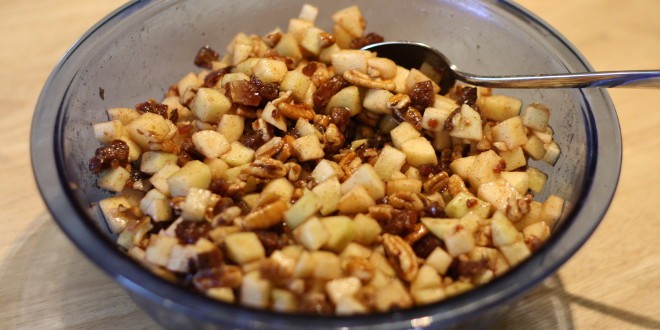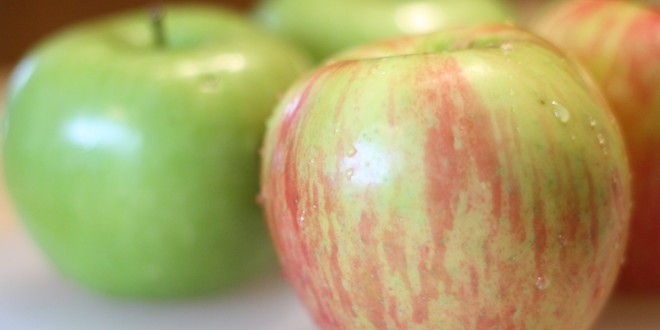One of the fun things about Passover for a foodie, is that there are so many food traditions to explore and play with. I love the traditional foods and have some favorites that I make every year. I have tried lots of different kinds of charoset in the past to mix things up or try some variety, but I always come back to this one as a family favorite. It just isn’t Passover without this traditional mix of apples, nuts, cinnamon, honey, and sweet Passover wine. Over the years, my recipe has evolved to the combination that I really like. A lot of recipes I have seen call for walnuts, but I have never really cared for walnuts so I use pecans. I also opt for dates instead of the usual raisins to add another layer of sweetness. To be honest, this is one of those dishes that I have never measured any of the ingredients. I just add them all to the bowl and put things in until it seems about right. However, since I can’t exactly share the recipe without some idea how much of each ingredient to put in, I actually measured everything this time to see if I had the proportions correct. This is definitely the kind of recipe you can adjust and modify to make it your own.

I like the apples chopped into small chunks so they still have some bite to them and contrast nicely with the soft dates and crunchy pecans.
I asked my son (after years of Jewish Day School education at HMJDS) what he knows about charoset. His response, “It is yummy” . . . but I think he knew I was looking for something a little more than that, so he quickly added that he knows it is supposed to remind us of the mortar used to make bricks. I asked if it made him think about making bricks when he eats it and he said no, he just knows that it tastes good. So I guess I am not the only one who has always been confused about this traditional food. It is supposed to remind us of the hard labor of making bricks, but it tastes sweet and we look forward to eating it more than we would look forward to manual labor. This year I may also reflect on the second story of the apple trees under which the baby Moses would have been born as I enjoy the sweet flavors of this traditional Passover essential. Charoset
- 4 apples peeled and chopped (I like to use a couple different varieties of apple)
- 8 ounces chopped dates
- 6 ounces chopped pecans
- 2 tsp cinnamon
- ¼ cup honey
- ¼ cup sweet wine
Combine apples, dates, and pecans in a large bowl and stir to combine. Sprinkle the cinnamon over the top and stir a little more so all the apples are evenly coated. Pour the honey and wine over the top of the mixture and give it another stir. Cover with plastic wrap and let it sit in the refrigerator until you are ready to serve. This is even better the next day after it has had time to let the flavors mix together. This makes a pretty big batch that should serve at least 8-10 people at a seder. Last year I made a batch with 6 apples and we had 14 at our seder. There was not much leftover, so I had to make more the next day. If you need more for your seder, you can easily double this recipe for a super big batch. If you are like my family, we love to have it as leftovers and we eat it through all of Passover. It doesn’t hurt that the apples and dates help with, ahem, matzah digestion.


